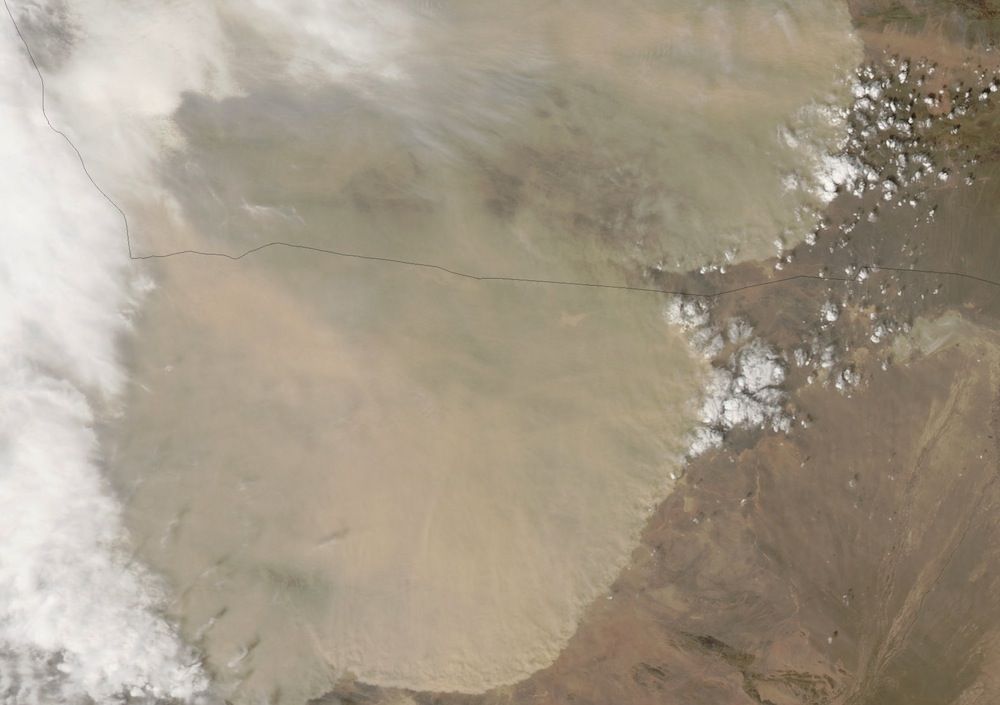China's 'Great Wall of Dust' Seen From Space

Northern China is infamous for dust storms that can sometimes choke Beijing in a yellow haze. A new satellite image shows one of these storms from above.
The Moderate Resolution Imaging Spectroradiometer (MODIS) on NASA's Aqua and Terra satellites captured this image on April 23, acording to NASA's Earth Observatory. This sandstorm affected the city of Dunhuang in northern China, turning the sky yellow-orange and forcing residents to don masks, the South China Morning Post reported.
Dust storms are so common in northern China and Mongolia that they have a name: Asian Dust. About 60 percent of the year's dust storms occur between March and May, according to the Taiwan Air Quality Monitoring Network. At this time of year, the ground is dry and free of snow, which allows strong surface winds to whip up clouds of dust and carry them for miles.
The storms exacerbate human-caused pollution from burning coal in China. As the country's economy grows, pollution (and its nasty health effects) has increased as well. This month, the Chinese government enacted a slate of new environmental laws meant to tackle the problem. The legislation strengthens fines against polluters and provides more pathways for environmental lawsuits.
Beijing is also fighting back against pollution, with a new requirement that construction sites in the city install cameras to monitor dust and rules against open vehicles carrying sand and other dusty materials.
The dust storm spotted by NASA's satellites was driven by a large front moving east, according to the Earth Observatory. In some areas, visibility dropped to less than 160 feet (50 meters).
Follow Stephanie Pappas on Twitter and Google+. Follow us @livescience, Facebook & Google+. Original article on Live Science.
Sign up for the Live Science daily newsletter now
Get the world’s most fascinating discoveries delivered straight to your inbox.

Stephanie Pappas is a contributing writer for Live Science, covering topics ranging from geoscience to archaeology to the human brain and behavior. She was previously a senior writer for Live Science but is now a freelancer based in Denver, Colorado, and regularly contributes to Scientific American and The Monitor, the monthly magazine of the American Psychological Association. Stephanie received a bachelor's degree in psychology from the University of South Carolina and a graduate certificate in science communication from the University of California, Santa Cruz.










